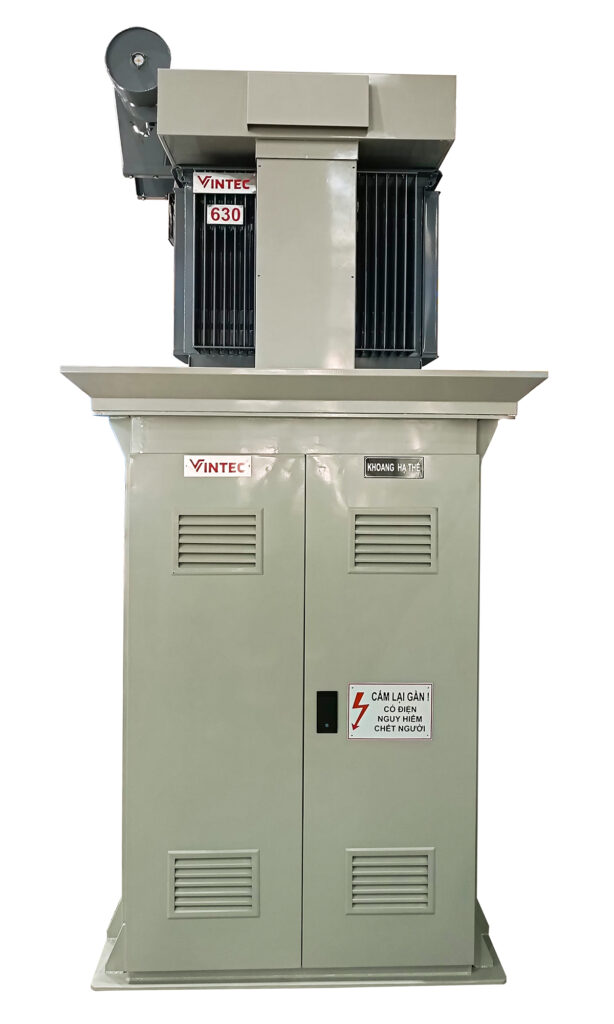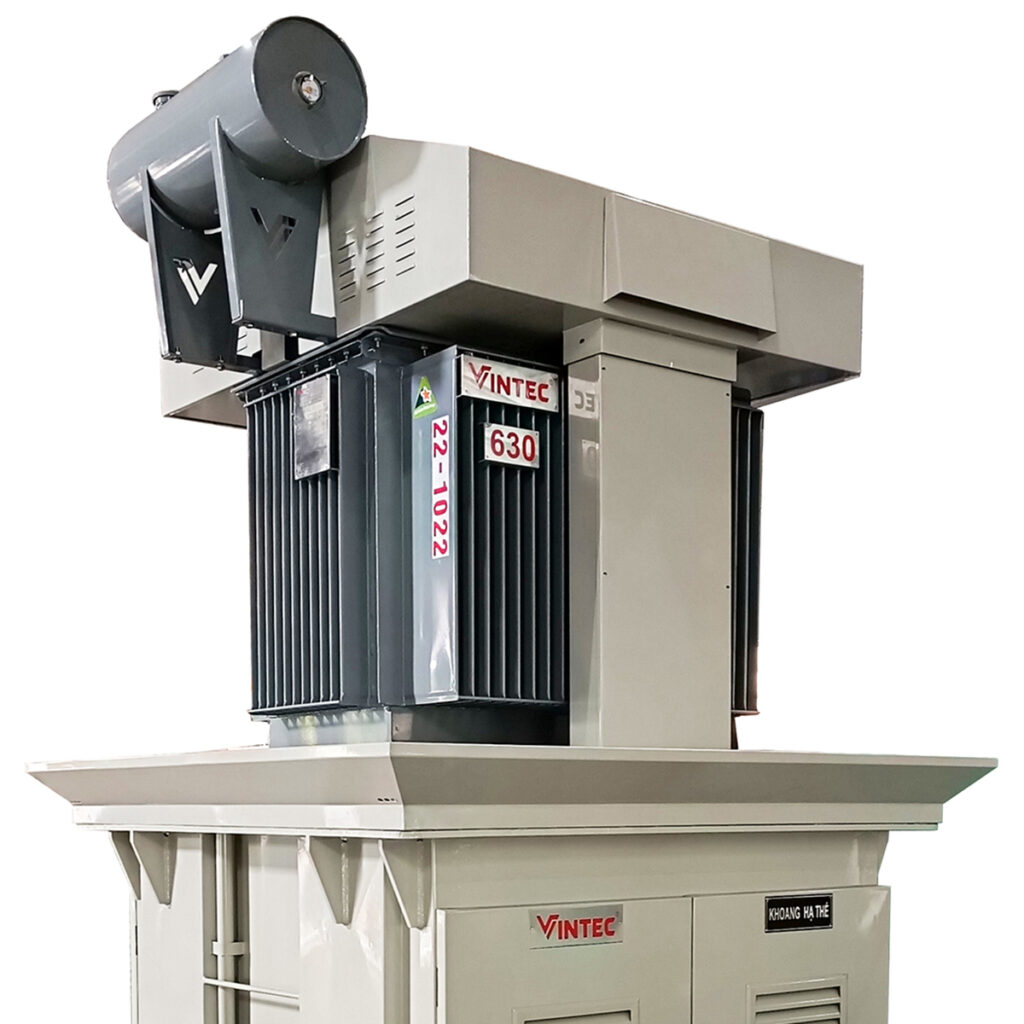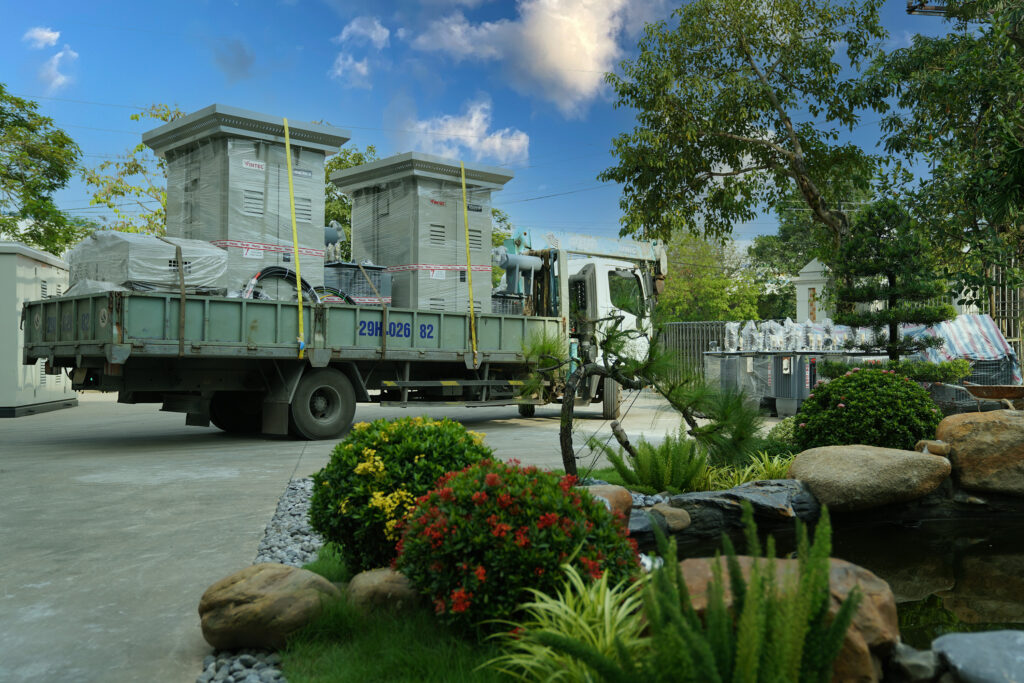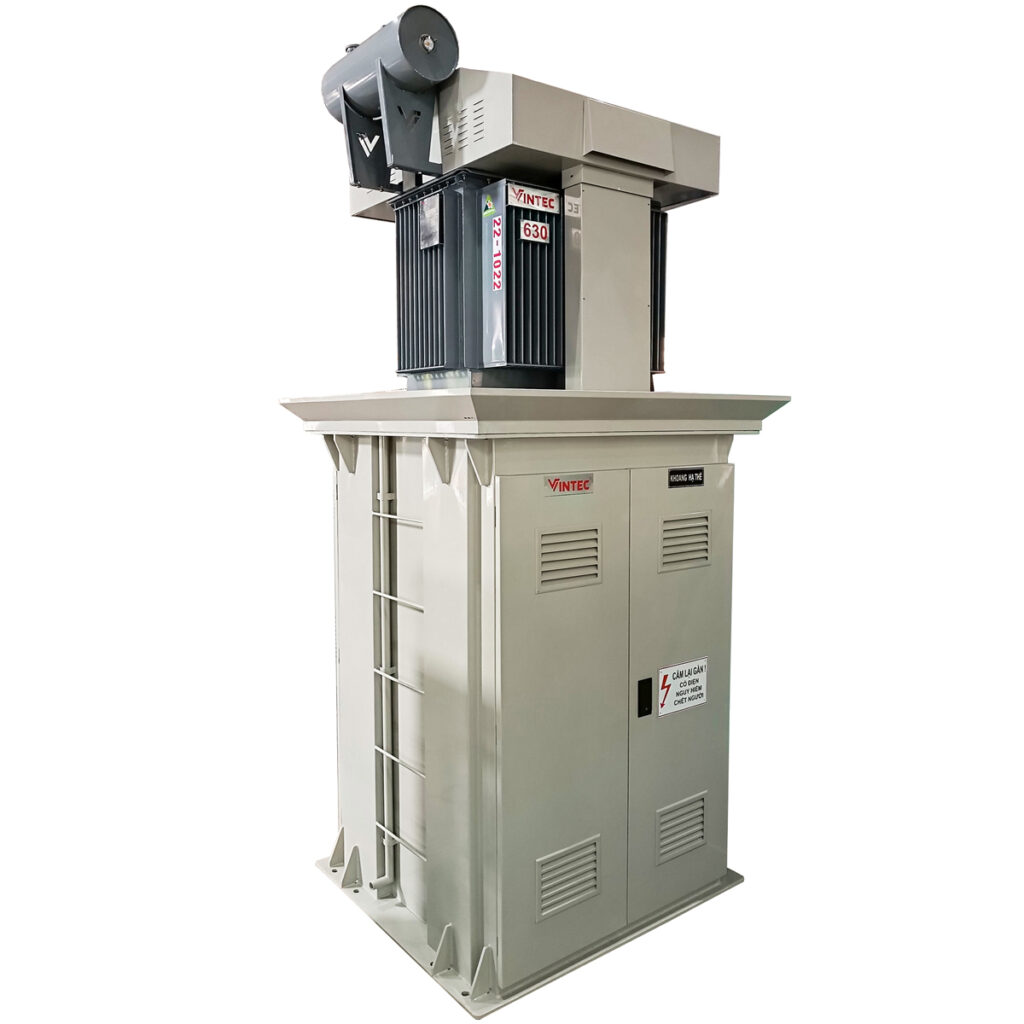1. What is a Single-Column Substation?
What is a Single-Column Substation? A single-Column substation is a static electrical device that operates based on the principle of electromagnetic induction, allowing voltage transformation while maintaining the frequency of the AC power system. This new type of integrated single-Column substation features a transformer mounted on a centrifugal concrete pole or a single-body steel pole.
2. Applications of Single-Column substations
Integrated single-Column substations can be used to supply medium-voltage (MV) power to industries, residential areas, and other complex construction sites.

Image of Single-Column substations
3. Operating Conditions of Single-Column substations
These substations are compact and independent, making them easy to operate and maintain, even on public sidewalks and in industrial zones. All operations can be performed by opening the front door of the substation.
4. Structure Single-Column substations
A Single-Column substation consists of four main components: the single-pole housing, the medium-voltage compartment, the low-voltage compartment, and the transformer. Each part of the integrated substation plays a role in ensuring efficient and sustainable operation.
4.1. Single-Column Integrated Substation Housing
The housing protects the internal equipment, minimizing environmental impact and ensuring user safety. It also serves as a support structure for the transformer mounted above.
- Made of steel plates with thicknesses of 2mm, 3mm, 5mm, etc., and coated with electrostatic paint.
- Standard color: RAL
- Dimensions: 1400W – H2530 – D1240
4.2. Medium-Voltage Compartment
The medium-voltage compartment functions similarly to an RMU cabinet, containing equipment such as fuses, switches, and medium-voltage circuit breakers. It is separated from other compartments by an insect-proof mesh. Specialized relays or LBS+fuse systems are installed for protection.
4.3. Low-Voltage Compartment
This compartment houses various measurement, protection, and transformer switching devices according to IEC 60947-2 standards. The main low-voltage cabinet uses ACB/MCCB breakers with different ratings depending on requirements.
4.4. Transformer Unlike enclosed single-Column substations
where the transformer is inside, the integrated single-Column substation has its transformer mounted on the pole with a support structure and a weather-protective cover for enhanced safety.
- It can be a single-phase, three-phase, or amorphous transformer.
- Transformer characteristics:
- Winding configuration: Yzn or Dyn
- Capacity: 160kVA, 200kVA, 250kVA, 400kVA, 560kVA, 630kVA, 750kVA, 1000kVA
- Secondary voltage: 220/440V

Image of Transformer Unlike enclosed single-Column substations
5. Specifications of Single-Column Substations
- Rated voltage: 15kV – 24kV – 36kV
- Frequency: 50Hz
- Capacity: Up to 30kVA, 75kVA, 100kVA…4000kVA (e.g., CS – 30, CS – 75, CS – 100… CS4000 with oil transformers)
- Insulation: Air insulation or SF6 insulation (24kV)
- Medium/low-voltage compartment protection rating: IP5X, IP4X
- Transformer compartment protection rating: IP4X (natural or forced ventilation)
- External operation
- Enclosure, doors, locks, and ventilation openings comply with IEC standards.
6. Equipment Installed in a Single-Column Substation
- Medium-voltage RMU cabinets from ABB, Schneider, Siemens, etc.
- Circuit breakers, overload and short-circuit protection devices from ABB, Schneider, Siemens, LS, Hyundai, etc.
- Main circuit breaker, outgoing circuit protection devices, low-voltage cables, grounding system, and auxiliary devices such as meters, current transformers, switches, indicator lights, fuses, and surge arresters from reputable local and international brands.
7. Testing of Integrated Single-Column Substations
Testing during production is a mandatory step that adheres to strict regulations set by the power industry. This ensures compliance with quality standards before delivery to customers. The kiosk substation is considered the heart of the power transmission and distribution system, so thorough testing is crucial to prevent potential failures that could significantly impact the entire electrical system. Vintec Group has invested in a transformer testing laboratory equipped with state-of-the-art devices from HAEFELY, Switzerland, to ensure absolute testing accuracy.
8. Storage and Transportation of Single-Column Substations
Must provides support for transportation and guidance on proper storage to ensure product quality before connecting to the power grid.
8.1. Storage
If not in use, the substation should be stored in a dry area, preferably in a covered warehouse. Substations should not be placed too close to each other to prevent damage to cooling components and other attached devices.
8.2. Transportation
The substation must remain upright and not be tilted. It should be securely fastened to prevent movement during transport, and no straps should be attached to cooling fins, wave-shaped panels, or insulators. When transported by Vintec’s trucks, the speed should not exceed 30 km/h.

Image of Single-Column substations transportation
9. Where to Buy a Single-Column Substation?
With nearly 20 years of experience in manufacturing transformers and electrical equipment, Vintec Group is a leading manufacturer of single-Column substations in Vietnam.
Related Products:
- Vintec Integrated Kiosk Substation
- Low-Voltage Distribution Cabinet
- Medium-Voltage Electrical Cabinet



